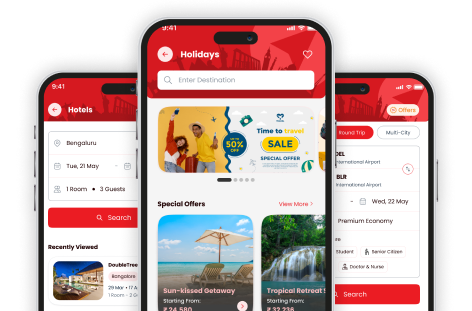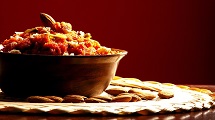India has plenty of different cultures. These cultures have different celebrations of their own. From Kashmir to Kanyakumari, the people of India never fail to celebrate various festivals in style.
When it comes to South India, the Pongal festival is an important one. Pongal festival is celebrated all over South India. This is the festival to show gratitude to mother nature. This time is known in Madurai as Jallikattu Bull Festival where men fight with furious bulls. In North India, this day is regarded as Makar Sankranti. This article discusses Pongal as the main festival of which state and how it is celebrated.
About the Pongal festival
What is the Pongal festival ? Pongal festival is a four-day-long harvest festival. It is celebrated by the people of Tamil Nadu. In a way, Pongal is the harvest festival of Tamil Nadu . This festival generally is observed during January and February. The Sun God is hailed through this festival, along with several animals who assist in farming.
According to Tamil people, this particular time of the year is known as Thai. This is the harvesting time for important crops. These include rice, turmeric, and sugarcane. The Pongal festival also goes by the name of the Thai Festival.
As per the Tamil language, the word Pongal has come from the word Pongu. It means to boil over. They celebrate the Pongal festival as a means of overflowing with success and progress in life.
Pongal is one of the most significant Hindu festivals, not only in Tamil Nadu but in other parts of South India also. States like Karnataka, Kerala, Telangana, Andhra Pradesh, and Pondicherry celebrate Pongal as well.
Pongal also signifies the completion of the cultivation season. Farmers dont have to go back to their farming lands in these four days. They worship mother nature for providing a good harvest.
History of the Pongal festival
The history of the Pongal festival goes way back. It is one of the oldest festivals of ancient India. It is known to be the Dravidian harvest festival. In Sanskrit Puranas, there are also several instances of Pongal. The instance of this festival is so old that it goes back 2,000 years.
Since the Sangam Age, this festival has been an integral part of Indian festivities. At that time Goddess Katyani was worshipped in the month of Margazhi. This became the modern-day Pongal festival.
Legend has it that long ago God Shiva ordered Basava, a bull, to deliver a message to humans. The message was that humans need to take showers and an oil massage every day but to consume food once a month. Unfortunately, the bull delivered the message all wrong. He said that they need to eat every day and take showers and oil messages only once a month. Lord Shiva got furious. He banished Basava to earth. He was ordered to assist the mortals to produce food.
According to another legend, Lord Krishna once lifted Mount Govardhan to teach a lesson to Lord Indra.
Various stages of the Pongal festival
- Bhogi Pongal
- Surya Pongal
- Mattu Pongal
- Kaanum Pongal
Bhogi Pongal
The very first day of the Pongal festival is known as Bhogi Pongal. This day in particular signifies a new beginning. People throw away old belongings. They wear new clothes. They rise early in the morning and discard their useless belongings on a bonfire.
Surya Pongal
The Sun God, aka Surya, is worshipped on the second day of Pongal. This is the most important day of the festival as well. Women decorate houses with white rice powder, also known as Kolam. They take shower. Then rice, milk, and raw sugar cane are boiled together in an earthen pot. This is called Pongal. Pongal boils, and people excitedly chant Pongal O Pongal. Thai Pongal is offered to the Sun God.
Mattu Pongal
On this day, useful farm animals like cows, and ox are worshipped. People bathe them. They decorate their horns with garlands, beads, and bells. The Prasad Pongal is then served to them as a means of worshipping so that they can help more with farming.
Kaanum Pongal
The last day of Pongal is known as Kaanum Pongal. On this day sugarcane is served to the Sun God. People gather around to show strength and unity. Older family members bless the younger ones with a healthy life.
There are many festivals celebrated during the year in Tamil Nadu which includes Thaipusam Festival , Karthigai Deepam , Thiruvaiyaru Festival , Natyanjali Dance Festival , Chitri Rai Festival , etc.
Pongal festival dishes
- Sakkarai Pongal
- Khara Pongal
- Lemon Rice
- Chakra Pongal
- Rava Pongal
Throughout the four-day-long Pongal festival, people cook a variety of recipes. Some of the best South Indian dishes are enjoyed at the time of the festival. All recipes are cooked in an earthen pot and dedicated to deities.
Sakkarai Pongal
Sakkarai Pongal is a popular Pongal festival food. It is cooked on the day of Surya Pongal. Rice is boiled with milk, moong dal, ghee, and jaggery. When it spills over, people shout Pongal o Pongal. Then it is served to the deities. People eat it thereafter as prasad.
Khara Pongal
Khara Pongal is a popular and spicy Pongal festival dish. In this recipe, in place of sweet ingredients, green chillies, black pepper, cashews, and curry leaves are used.
Lemon Rice
In this recipe, rice is boiled with curry leaves, spices, and lemon juice. This recipe is mainly served on the day of Kaanum Pongal. It tastes best when consumed with pickles or curd.
Chakra Pongal
Chakra Pongal is cooked with harvested rice, plenty of desi ghee, dry fruits, and jaggery. This delicious sweet recipe is mandatory for the Pongal festival. First, it is served to the Sun God to show gratitude.
Rava Pongal
Rava Pongal is a quite popular breakfast recipe across South India. It is normally prepared with semolina, moong dal, spices, herbs, green peas, and cashews. It can be paired with coconut chutney to get a great taste.
There are many tasty South Indian dishes every person must want to eat. All the famous restaurants in Tamil Nadu will serve some delicious dishes which include Masala Dosa , Kari Dosai , Elaneer Payasam , Nethili Fish Fry , Kothu Parotta , Sundal, Meen Kozhambu , etc.






